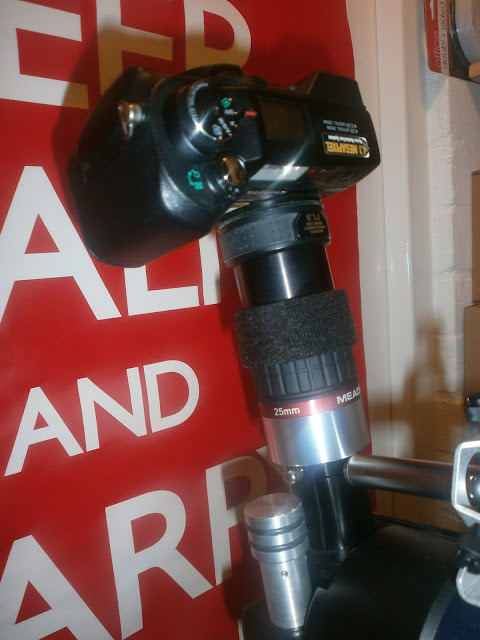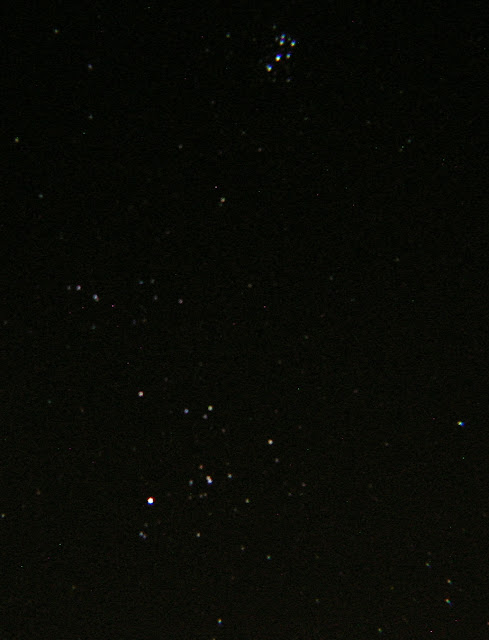We had few days of relatively clear skies over Longstanton last week, so I pointed the telescope in the direction of the Andromeda Galaxy, or M31. But my target for the night was not the Andromeda Galaxy itself (of which I've already written something here and here) but the oft-overlooked 'satellite' galaxies close to it.
A satellite galaxy is a small galaxy that is in orbit around a much larger, more massive one. A satellite galaxy orbits a larger galaxy due to gravitational attraction. In a pair of orbiting galaxies, if one is considerably larger than the other, then the larger is the "primary" and the smaller is the satellite.
Our own Milky Way Galaxy, for example, has several satellite galaxies, including the Large and Small Magellanic Clouds (which, unfortunately, are not observable from the northern skies of Longstanton). The Andromeda Galaxy has at least 14 dwarf galaxies. The brightest and closest of these is M32, which is the fuzzy ball right at the bottom the picture above. The second brightest. and a little further away from M31's core, is M110, which is the fuzzy patch to the upper right of the Andromeda Galaxy in the picture above. M31's other satellite galaxies are, unfortunately, much fainter and unobservable with my my tiny amateur scope.
M32 is a dwarf elliptical galaxy can be seen even in small telescopes as a slightly elongated bright patch due south of M31's central region. It is, in fact, so bright that, looking at the picture above, you might even think that it is a star. However, if you zoom in on M32 in that picture and compare M32 with the two actual stars above it, you might notice that M31 looks more nebulous and less intense than the stars (see picture below). The difference is even more evident if you look at the negative image on the right
Although its diameter is only about 8,000 light-years across and its total mass about 3 billion solar masses, M32 has a nucleus comparable to that of its big sister M31, with some 100 million solar masses in rapid motion around a central supermassive object. M32 also has a stellar population similar to that of larger ellipticals, including a mixture of mostly old, low-mass stars and some intermediate-age stars richer in heavy elements, though it lacks globular clusters. These facts suggest that M32 may once have been much larger but then lost its outer stars and globular clusters during one or more close encounters with M31. These stars and clusters would have become part of M31's halo.
M32 contrasts markedly with the other bright satellite of the Andromeda Galaxy – M110. Messier 110 is a dwarf elliptical galaxy and there is certainly no mistaking M110 for a fuzzy star - it isa the fuzzy patch above right of M31 in the top-most picture and has a halo around its nucleus, just like its big sister. M110 is 16,000 light-years across and has an estimated mass of 10 billion solar masses. It also contains some dust clouds and hints of recent star formation, which is unusual for dwarf elliptical galaxies in general.
All photographs on this page © Sabri Zain 2012.




















































